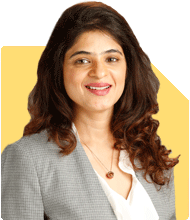Ramalingam Kalirajan |8459 Answers |Ask -Follow
Mutual Funds, Financial Planning Expert - Answered on May 18, 2024
He has an MBA in finance from the University of Madras and is a certified financial planner.
He is the director and chief financial planner at Holistic Investment, a Chennai-based firm that offers financial planning and wealth management advice.... more
.jpg)
Hi I am a 65 year old house wife looking for investment options to take care of myself. Income sources : Son gives 10000 and husband gives 3000 per month. I have an existing FD of 2 lakh rupees. Where all I can invest and I don't have a health insurance, any suggestions to plan my investment as well as health policy
Understanding Your Income:
Combined Income: You have a combined monthly income of Rs. 13,000 (Rs. 10,000 from son + Rs. 3,000 from husband).
Financial Goals: Consider your financial goals. Are you looking for regular income, to grow your savings, or both?
Investment Options:
FD Reinvestment: Consider reinvesting your existing FD or its interest to earn compound interest.
Debt Funds: Debt funds offer stability and regular income, potentially suitable for your situation.
Senior Citizen Savings Scheme (SCSS): This government scheme offers attractive interest rates for senior citizens.
Importance of Health Insurance:
Medical Expenses: Medical emergencies can be expensive. Health insurance can help manage these costs.
Senior Citizen Plans: Many insurance companies offer health insurance plans specifically designed for senior citizens.
Benefits of a CFP:
Personalized Plan: Consulting a Certified Financial Planner (CFP) is recommended. They can assess your needs, risk tolerance, and suggest suitable investment options and health insurance plans.
Here's a simplified example (not a recommendation):
Invest Rs. 50,000 in Debt Funds (SIP): Start a Systematic Investment Plan (SIP) in debt funds for regular income.
Invest Remaining in SCSS: Invest the remaining amount in SCSS for a good interest rate and safety.
Get a Senior Citizen Health Insurance Plan: Choose a health insurance plan that covers your needs and budget.
Remember:
Review Regularly: Review your investments and health insurance plan (at least annually) with your CFP to ensure they remain aligned with your needs.
Start Investing Early: Even a small amount invested regularly can grow significantly over time.
Emergency Fund: Maintain an emergency fund with 3-6 months of living expenses for unexpected situations.
By taking charge of your finances and getting proper health coverage, you can secure a brighter future for yourself!
Best Regards,
K. Ramalingam, MBA, CFP,
Chief Financial Planner,
www.holisticinvestment.in
You may like to see similar questions and answers below
Ramalingam Kalirajan |8459 Answers |Ask -Follow
Mutual Funds, Financial Planning Expert - Answered on May 18, 2024
Ramalingam Kalirajan |8459 Answers |Ask -Follow
Mutual Funds, Financial Planning Expert - Answered on May 28, 2024
Milind Vadjikar |1236 Answers |Ask -Follow
Insurance, Stocks, MF, PF Expert - Answered on Nov 21, 2024
Ramalingam Kalirajan |8459 Answers |Ask -Follow
Mutual Funds, Financial Planning Expert - Answered on Nov 18, 2024
Dr Nagarajan J S K |405 Answers |Ask -Follow
NEET, Medical, Pharmacy Careers - Answered on May 16, 2025
Prof Suvasish Mukhopadhyay |651 Answers |Ask -Follow
Career Counsellor - Answered on May 16, 2025
Prof Suvasish Mukhopadhyay |651 Answers |Ask -Follow
Career Counsellor - Answered on May 16, 2025
Radheshyam Zanwar |1634 Answers |Ask -Follow
MHT-CET, IIT-JEE, NEET-UG Expert - Answered on May 16, 2025
Radheshyam Zanwar |1634 Answers |Ask -Follow
MHT-CET, IIT-JEE, NEET-UG Expert - Answered on May 16, 2025
Ashwini Dasgupta |107 Answers |Ask -Follow
Personality Development Expert, Career Coach - Answered on May 16, 2025
Ramalingam Kalirajan |8459 Answers |Ask -Follow
Mutual Funds, Financial Planning Expert - Answered on May 16, 2025
Ramalingam Kalirajan |8459 Answers |Ask -Follow
Mutual Funds, Financial Planning Expert - Answered on May 16, 2025
Milind Vadjikar |1236 Answers |Ask -Follow
Insurance, Stocks, MF, PF Expert - Answered on May 16, 2025
Milind Vadjikar |1236 Answers |Ask -Follow
Insurance, Stocks, MF, PF Expert - Answered on May 16, 2025



























